Boosting CSAT Scores Made Easy for Modern Businesses

Ever wondered why some businesses seem to win customers over effortlessly? It’s all about delivering an experience that leaves people happy and loyal. Understanding CSAT meaning is crucial here—Customer Satisfaction (CSAT) scores are the gold standard for measuring this. For instance, scores above 80% signal great customer happiness, but anything below 70% means you’ve got work to do. That’s where Sobot steps in. With its powerful tools like an AI-powered call center and omnichannel solutions, Sobot helps you transform every interaction into a satisfying experience. Because when customers feel valued, your business thrives.
CSAT Meaning and Its Importance for Businesses
What Is CSAT? A Quick Overview
CSAT, or Customer Satisfaction Score, is a simple yet powerful way to measure how happy your customers are with your business, product, or service. It’s usually calculated through surveys where customers rate their satisfaction on a scale—like 1 to 5 or 1 to 10. For example, if 20 people respond to a survey and their total score is 80, the average score is 4. To convert this into a percentage, you divide satisfied responses by the total responses and multiply by 100. So, if 10 out of 20 customers are satisfied, your CSAT score is 50%.
Here’s a quick breakdown:
| Aspect | Details |
|---|---|
| Definition | CSAT measures customer satisfaction with a business, product, or service. |
| Survey Format | Customers rate satisfaction on a scale (1-5, 1-7, or 1-10) or through stars. |
| Good Score Benchmark | A score above 70% is generally considered good. |
| Numerical Example | For 20 respondents with a total score of 80, the average score is 4. |
| CSAT Percentage Example | If 10 out of 20 respondents are satisfied, the CSAT score is 50% (0.5 * 100). |
Understanding CSAT meaning helps you focus on what matters most—your customers’ happiness.
Why CSAT Scores Matter in Modern Business
Your CSAT score isn’t just a number; it’s a reflection of your customers’ experience. High scores often mean loyal customers who keep coming back. Research shows that businesses with strong CSAT scores enjoy better customer retention, repeat purchases, and higher revenue. For instance, a retail chain that improved its CSAT by 15% saw its Net Promoter Score (NPS) jump from 25 to 45, boosting customer loyalty and sales.
| Evidence Description | Outcome |
|---|---|
| High CSAT scores correlate with strong customer loyalty and repeat purchases. | Directly influences revenue and profitability. |
| A retail chain improved CSAT scores by 15% through targeted training. | NPS rose from 25 to 45, leading to better sales performance. |
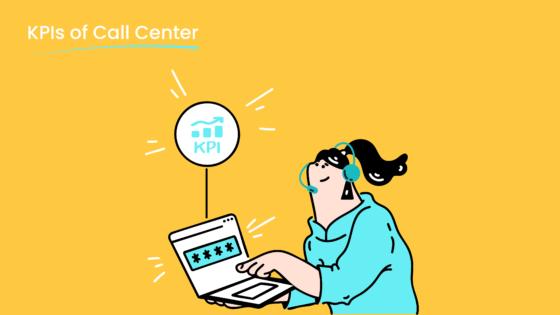
Sobot’s tools, like its AI-powered Voice/Call Center, can help you achieve similar results. By offering features like intelligent IVR and real-time monitoring, Sobot ensures every customer interaction is smooth and satisfying.
Common Standards for Measuring Customer Satisfaction
To measure customer satisfaction effectively, you need to compare your CSAT scores against industry benchmarks. This helps you see how you stack up against competitors and identify areas for improvement. Some common standards include:
- Comparing scores to industry averages to gauge performance.
- Using benchmarks like the Zendesk Benchmark to assess customer satisfaction.
- Evaluating scores at different touchpoints to capture timely feedback.
Sobot’s omnichannel solution makes it easy to measure customer satisfaction across multiple platforms. Whether it’s through live chat, email, or voice calls, you can gather insights and improve your CSAT effortlessly.
Setting Goals and Measuring CSAT Effectively
Establishing Clear Objectives for CSAT Improvement
Improving CSAT starts with setting clear and actionable goals. You need to define what success looks like for your business. For example, aiming for an 85% CSAT score across text channels like chat and email next quarter gives your team a tangible target. Regularly reviewing results against benchmarks ensures you stay on track.
Think about specific objectives that align with your customer service strategy. Are you looking to reduce response times or improve first-contact resolution rates? Implementing tools to track customer feedback against product updates or bug fixes can help you monitor progress. Sobot’s omnichannel solution simplifies this process by consolidating customer data, making it easier to identify trends and set realistic goals.
Tip: Break down your goals into smaller milestones. This makes it easier to measure progress and celebrate wins along the way.
Tools and Techniques for Accurate CSAT Surveys
Accurate customer satisfaction surveys are the backbone of effective CSAT measurement. To get reliable data, you need to focus on timing, simplicity, and consistency. Send surveys right after interactions to capture fresh feedback. Keep them short and focused to increase completion rates. Use the same scale and questions across surveys for comparable results.
Here’s how you can measure CSAT effectively:
- Post-Purchase Surveys: Ask customers about their experience immediately after a purchase.
- Support Interaction Surveys: Send surveys right after a ticket is closed to gauge satisfaction.
- Lifecycle Surveys: Measure satisfaction during key moments like onboarding or feature updates.
- Renewal Surveys: Collect feedback before renewal periods to address concerns.
- Regular Surveys: Conduct periodic surveys to track overall satisfaction trends.
Sobot’s AI-powered Voice/Call Center enhances survey accuracy by capturing real-time feedback during calls. Combining traditional surveys with tools like CSATai provides deeper insights into customer satisfaction. This dual approach ensures you don’t miss valuable data from non-respondents.
Leveraging Sobot's Voice/Call Center for Real-Time Feedback
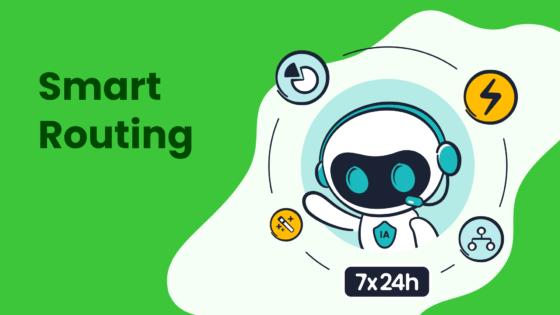
Real-time feedback is a game-changer for improving CSAT. Sobot’s Voice/Call Center lets you gather insights during live interactions. Features like intelligent IVR and smart call routing ensure customers reach the right agent quickly, reducing frustration. Agents can access a unified workspace to view customer history, enabling personalized service that boosts satisfaction.
Imagine this: A customer calls with a complex issue. Instead of repeating their problem, the agent sees their previous interactions and resolves the issue efficiently. This seamless experience leaves the customer happy and improves your CSAT score.
Sobot’s platform also supports global telephony contacts, making it ideal for businesses with international customers. With 99.99% system uptime, you can rely on Sobot to deliver consistent service and collect feedback without interruptions.
Note: Real-time feedback not only helps you improve CSAT but also builds trust with your customers.
Analyzing Feedback to Improve CSAT Scores
Identifying Patterns in Customer Feedback
Customer feedback is like a treasure map—it shows you where to dig for insights. To improve your CSAT score, start by identifying patterns in what customers are saying. Are they frequently mentioning long wait times or unclear instructions? These recurring themes point to areas needing attention.
Advanced tools like Natural Language Processing (NLP) and text mining can help you uncover these patterns. For example, Gousto, a meal-kit delivery company, used real-time analysis of customer conversations to identify why customers returned food. By addressing these issues, they improved customer satisfaction and reduced losses.
You can also categorize feedback by themes like product quality, customer service, or delivery speed. This segmentation helps you focus on the most critical areas. Sobot’s omnichannel solution makes this process seamless by consolidating feedback from multiple channels into one platform. With everything in one place, spotting trends becomes much easier.
Using Data Analytics to Drive Insights
Data analytics turns raw feedback into actionable insights. By calculating metrics like CSAT, NPS, or CES, you can measure customer sentiment and track trends over time. Segmenting this data by demographics or regions reveals variations in satisfaction, helping you tailor your strategies.
Business intelligence tools like Power BI and Looker make this even more effective. They provide real-time visualizations of customer feedback, allowing you to act quickly. For instance, if your CSAT score drops after a product update, you can pinpoint the issue and fix it before it escalates.
Sobot’s AI-powered Voice/Call Center takes this a step further. It uses real-time monitoring and analytics to track customer interactions. This means you can identify dissatisfaction during calls and address it immediately. With features like sentiment analysis, you’ll know exactly how customers feel and why.
Addressing Root Causes of Low Customer Satisfaction
Once you’ve identified the issues, it’s time to tackle them head-on. Start by addressing the most common complaints. For example, if customers often mention slow response times, consider optimizing your customer service processes.
A Fortune 500 asset management company successfully shifted from a product-focused to a customer-focused strategy by addressing dissatisfaction. They implemented satisfaction measurement tools and saw significant improvements in loyalty and financial performance.
Sobot’s solutions can help you achieve similar results. Its unified workspace ensures agents have all the information they need to resolve issues quickly. Plus, with features like smart call routing, customers get connected to the right agent faster, reducing frustration. By focusing on the root causes, you’ll not only improve your CSAT score but also build long-term trust with your customers.
Personalizing Customer Experiences to Improve CSAT
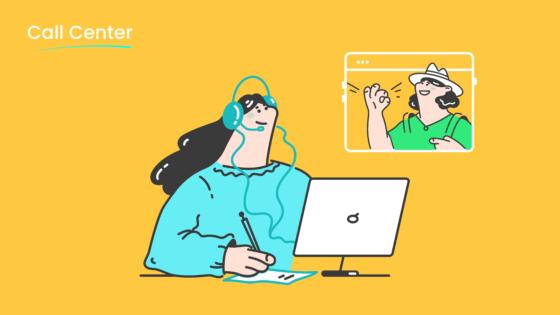
Leveraging Customer Data for Tailored Interactions
Personalized customer service starts with understanding your customers. By leveraging customer data, you can create tailored interactions that make every touch point meaningful. For instance, predictive analytics can help you anticipate customer needs, ensuring your service feels proactive rather than reactive.
Consider this: 74% of customers abandon online purchases because they feel overwhelmed by choices. By analyzing their browsing history, you can recommend products that match their preferences, simplifying their decision-making process. Companies like Tapestry have used consumer data to strengthen customer connections, achieving 6% year-over-year growth and gaining 2.4 million new customers. Similarly, Levi Strauss & Co. tailored inventory based on product popularity and weather data, ensuring customers always find what they need.
Sobot’s omnichannel solution makes this process seamless. It consolidates customer data from multiple channels, giving your agents a unified view of each customer’s journey. This allows them to offer personalized customer service that boosts satisfaction and loyalty.
Enhancing Multichannel Support with Sobot's Omnichannel Solution
Multichannel support is no longer optional—it’s essential for delivering exceptional customer service. Customers expect seamless experiences across all touch points, whether they’re chatting online, calling your support team, or emailing a query. Sobot’s omnichannel solution excels in this area, offering a unified workspace that integrates voice, email, social media, and more.
The results speak for themselves: brands using Sobot’s solution have seen a 20% reduction in inbound volume, a 96% positive feedback rate, and a 97% CSAT score. Samsung, for example, achieved a 30% increase in agent efficiency and a CSAT score of 97% after integrating Sobot’s platform.
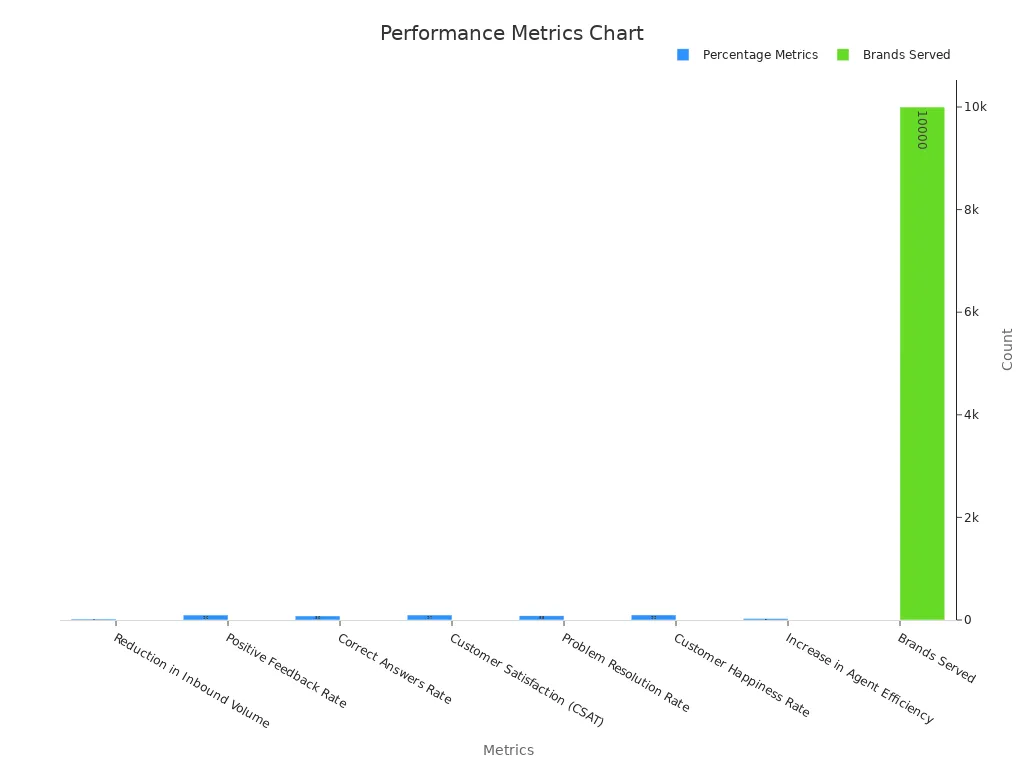
With features like AI-driven chatbots and real-time analytics, Sobot ensures your team can handle customer inquiries efficiently while maintaining high satisfaction rates.
Examples of Successful Personalization Strategies
Personalization isn’t just a buzzword—it’s a proven strategy for improving CSAT. Companies that prioritize personalized customer service often see measurable results.
| Company | Personalization Strategy | Impact on CSAT |
|---|---|---|
| Birchbox | Subscription model offering personalized products | 100% annual growth in subscription box services, indicating strong customer demand and retention potential. |
| Dove | Emotional branding through 'Real Beauty' campaign | Emotionally engaged customers are 3x more likely to recommend and repurchase. |
| Salesforce | Tracking CX metrics for engagement strategies | 25% more likely to retain customers and 20% more likely to experience revenue growth. |
| American Express | Sentiment analysis for customer interactions | 35% increase in customer satisfaction and 20% reduction in negative feedback. |
These examples highlight the power of personalization. Whether it’s tailoring products to customer preferences or using sentiment analysis to improve interactions, personalization drives satisfaction and loyalty. Sobot’s tools, like its AI-powered Voice/Call Center, empower businesses to implement these strategies effectively, ensuring every customer feels valued.
Enhancing Support Channels and Reducing Response Times
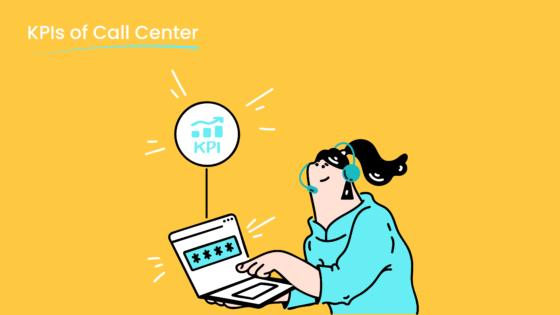
Optimizing Multichannel Support Systems
Your customers expect quick and seamless service across all channels. Whether they’re reaching out via email, live chat, or social media, they want consistent and efficient support. Optimizing your multichannel support system ensures you meet these expectations while boosting satisfaction.
Here’s why multichannel support matters:
- Offering support through multiple channels improves first response time (FRT) and overall customer satisfaction.
- Chatbots and virtual agents provide instant responses, reducing wait times.
- Tracking metrics like First Contact Resolution and Time to Resolution helps identify bottlenecks and optimize workflows.
- Customer feedback highlights areas for improvement, ensuring your support evolves with customer needs.
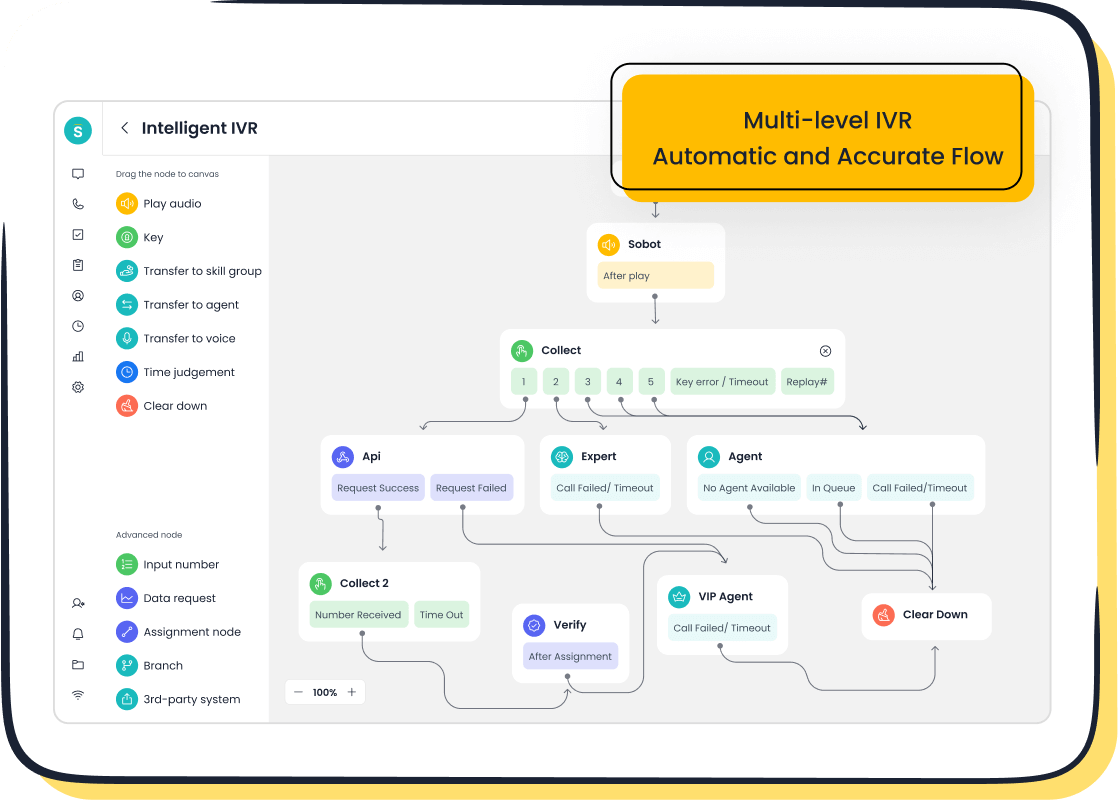
Sobot’s omnichannel solution simplifies this process. It integrates all communication channels into a unified workspace, allowing your team to manage inquiries without switching platforms. For example, Samsung achieved a 97% CSAT score and a 30% increase in agent efficiency by using Sobot’s platform. With features like AI-driven chatbots and real-time analytics, you can deliver faster, smarter, and more personalized customer service.
| Metric | Description | Impact on CSAT |
|---|---|---|
| First Response Time | Measures the time taken for a support team to respond to a customer's inquiry. A shorter FRT is linked to higher satisfaction. | Reducing FRT from 24 hours to 2 hours can significantly boost CSAT scores. |
| Customer Satisfaction Score (CSAT) | Reflects customer feelings about the support received, typically gathered through surveys. | Tracking CSAT post-interaction helps gauge support effectiveness. |
| Net Promoter Score (NPS) | Assesses likelihood of customers recommending the service, indicating loyalty. | A high NPS suggests effective support channels lead to positive word-of-mouth. |
| Resolution Rate | Tracks percentage of issues resolved on first contact. A high rate indicates effective support. | High resolution rates correlate with improved customer satisfaction. |
Tip: Use analytics tools to track FRT and resolution rates. These insights help you set benchmarks and improve your customer support strategy.
Reducing Response Times with Sobot's AI-Powered Voice/Call Center
Long wait times frustrate customers and hurt your CSAT scores. Reducing response times is key to delivering exceptional customer service. Sobot’s AI-powered Voice/Call Center makes this easier than ever.
Here’s how it works:
- Intelligent IVR routes calls to the right agent instantly, cutting down wait times.
- AI automation resolves tickets 52% faster, ensuring customers get quick solutions.
- Real-time monitoring tracks response times, helping you identify and address delays.
Take AkzoNobel as an example. By leveraging AI-powered tools, they reduced their average response time from 6 hours to just 70 minutes. Companies using AI report a 37% drop in first response times, proving the effectiveness of automation in customer support.
Sobot’s platform also offers global telephony contacts and a 99.99% system uptime, ensuring reliable service for customers worldwide. With features like smart call routing and sentiment analysis, you can deliver faster, more personalized support that keeps customers happy.
| Statistic Description | Result |
|---|---|
| AI automation helps companies resolve tickets | 52% faster |
| Companies using AI report a drop in first response times | 37% |
| AkzoNobel reduced average response time from | 6 hours to 70 minutes |
Note: Faster response times not only improve satisfaction but also build trust and loyalty among your customers.
Training Teams for Efficient Problem Resolution
Your team plays a crucial role in delivering great customer service. Proper training ensures they have the skills and knowledge to resolve issues quickly and effectively.
Effective customer service training focuses on:
- Building problem-solving skills to handle complex inquiries.
- Teaching communication techniques for clear and empathetic interactions.
- Familiarizing agents with tools like Sobot’s unified workspace for streamlined workflows.
Training programs also yield measurable results. Positive reactions from participants lead to better learning and retention. Improved knowledge, skills, and abilities (KSAs) enhance team performance, while effective application of these skills boosts problem resolution rates.
| Training Outcome Metrics | Description | Impact on Problem Resolution |
|---|---|---|
| Reactions | Affective and utility judgments of participants post-training | Positive reactions lead to greater learning and retention |
| Learning | Change in knowledge, skills, and abilities (KSAs) due to training | Improved KSAs enhance team performance |
| Transfer | Utilization of newly acquired KSAs in the job context | Effective application of skills leads to better problem resolution |
| Results | Beneficial organizational changes (e.g., patient safety, satisfaction) | Direct correlation with improved team efficiency and outcomes |
Sobot supports your team’s growth with tools that simplify workflows and reduce repetitive tasks. By combining training with advanced technology, you empower your agents to deliver faster and more effective customer support.
Callout: Regular training sessions keep your team sharp and ready to tackle new challenges.
Proactively Addressing Negative Feedback
Turning Complaints into Opportunities for Growth
Negative feedback might feel like a setback, but it’s actually a goldmine for growth. When customers share their frustrations, they’re giving you a chance to improve. A study by the Harvard Business Review found that recovering from a bad experience can boost customer loyalty by up to 40%. Plus, HubSpot’s research shows that 60% of customers are willing to forgive mistakes if they see genuine efforts to resolve issues.
So, how can you turn complaints into opportunities? Start by analyzing feedback to uncover recurring themes. For example:
- Use customer feedback to identify pricing concerns and launch targeted promotions.
- Monitor sentiment scores to understand pain points and satisfaction levels.
- Shift from reactive problem-solving to proactive strategies that exceed expectations.
Sobot’s omnichannel solution makes this process seamless. By consolidating feedback from multiple channels, you can spot trends and act quickly. This approach not only improves CSAT scores but also strengthens customer loyalty.
Steps to Respond Effectively to Negative Feedback
Handling negative feedback effectively requires a clear strategy. Here’s a step-by-step guide to help you respond like a pro:
- Acknowledge Quickly: Respond to complaints as soon as possible to show customers you care.
- Take Action Transparently: Explain the steps you’re taking to resolve the issue. Transparency builds trust.
- Engage Authentically: Stay connected with your customers through regular updates.
- Listen and Adapt: Use feedback to refine your processes and demonstrate your commitment to improvement.
- Build Trust Through Transparency: Own up to mistakes and keep customers informed throughout the resolution process.
Tools like Sobot’s Voice/Call Center can help you implement these steps. Features like real-time monitoring and sentiment analysis allow you to detect dissatisfaction early and address it before it escalates.
Tip: Use social media listening tools to track brand mentions and respond to concerns promptly.
Building Long-Term Trust Through Transparency
Transparency is the foundation of trust. When you’re open about your processes and honest about mistakes, customers are more likely to stick around. Long-term trust doesn’t just improve CSAT scores—it also boosts retention and engagement.
| Key Metric | Implication for Customer Trust |
|---|---|
| Customer Retention Rates | Higher retention indicates stronger trust levels. |
| Engagement Scores | Increased engagement correlates with transparency. |
| Product Usage Over Time | Consistent usage reflects customer satisfaction. |
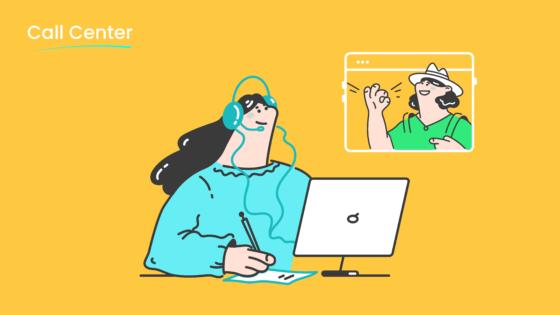
Sobot’s solutions, like its AI-powered Voice/Call Center, help you maintain transparency by providing clear communication channels and real-time updates. When customers see your genuine efforts, they’ll not only forgive mistakes but also become your biggest advocates.
Callout: Transparency isn’t just a strategy—it’s a promise to your customers that you value their trust.
Implementing Quality Assurance Programs for CSAT Improvement
Monitoring Customer Interactions for Quality
Monitoring customer interactions is the cornerstone of any quality assurance program. By observing how your team handles calls, chats, or emails, you can identify areas for improvement and ensure consistent service delivery. Tools like Observe.AI’s Auto QA and Verint Quality Management Scorecards make this process seamless. They automatically analyze interactions, flag issues, and provide actionable insights. For example, longer-than-average call durations or a high number of assists might indicate that agents need additional training.
Tagging calls for negative characteristics is another effective strategy. If a customer interaction involves frustration or unresolved issues, these tags help you prioritize follow-ups. Sobot’s Voice/Call Center enhances this process with real-time monitoring and sentiment analysis. You can track metrics like First Call Resolution and Average Handle Time to ensure your team meets quality standards.
Tip: Regularly review flagged interactions to uncover patterns and refine your approach.
Setting Up Regular Training and Coaching Programs
Training isn’t just a one-time event—it’s an ongoing process. Regular coaching sessions help your team stay sharp and adapt to changing customer needs. Studies show that individual coaching delivers the highest satisfaction levels, as it focuses on personal growth and goal attainment. Group training also works well, especially for fostering teamwork and addressing common challenges.
| Coaching Method | Satisfaction Level | Notes |
|---|---|---|
| Individual Coaching | Highest | Most effective for goal attainment and personal growth. |
| Group Training | High | Satisfaction levels were higher than control but lower than individual coaching. |
| Self-Coaching | Comparable | Satisfaction levels were similar to group training and control group. |
| Control Group | Lowest | No coaching provided, serving as a baseline for comparison. |
Sobot supports these efforts with tools like its unified workspace, which simplifies workflows and reduces repetitive tasks. By combining technology with tailored coaching, you can empower your team to deliver exceptional service.
Using Quality Metrics to Drive Continuous Improvement
Quality metrics are your roadmap to better customer satisfaction. Metrics like QA Scores, First Call Resolution, and Average Handle Time provide valuable insights into your team’s performance. For instance, tracking QA Scores helps you identify low performers and correlate service quality with CSAT scores.
| Metric | Description |
|---|---|
| QA Scores | Identifies low performers and correlates service quality with CSAT scores. |
| First Call Resolution | Measures the percentage of calls resolved on the first contact, impacting customer satisfaction. |
| Average Handle Time | Tracks the average duration of customer interactions, influencing efficiency and customer experience. |
Companies like Zappos and Starbucks have used metrics like Net Promoter Score (NPS) and CSAT surveys to align their strategies with customer expectations. Sobot’s AI-powered tools make it easy to gather and analyze these metrics, ensuring your quality assurance efforts lead to tangible improvements.
Callout: Continuous improvement isn’t just about fixing problems—it’s about creating a culture of excellence that keeps your customers coming back.
Improving CSAT scores doesn’t have to be complicated. By setting clear goals, analyzing feedback, and personalizing customer experiences, you can create a strategy that works. Businesses that focus on customer satisfaction see tangible results. For example, higher CSAT scores lead to repeat business, and customers are 5.1 times more likely to recommend your brand after a positive experience. Even a 5% increase in retention can boost profits by over 25%.
Consistent effort and customer-centric practices are key. Tools like Sobot’s AI-powered Voice/Call Center and omnichannel solution simplify the process, helping you improve customer satisfaction while building emotional connections that drive loyalty. Companies that prioritize these strategies outperform competitors by 306% in lifetime value. Start exploring Sobot’s solutions today to transform your customer interactions into lasting relationships.
FAQ
What is a good CSAT score for my business?
A good CSAT score typically falls above 80%. This indicates that most of your customers are satisfied. However, the ideal score can vary by industry. For example, retail often aims for 85% or higher, while tech support may consider 75% excellent.
Tip: Use Sobot’s omnichannel solution to track and improve your CSAT score across all customer touchpoints.
How can Sobot’s Voice/Call Center improve customer satisfaction?
Sobot’s Voice/Call Center reduces wait times with intelligent IVR and smart call routing. It also provides agents with a unified workspace to access customer history, enabling faster and more personalized resolutions. These features directly enhance customer satisfaction and loyalty.
Why is real-time feedback important for CSAT improvement?
Real-time feedback helps you address issues immediately, preventing dissatisfaction from escalating. For instance, Sobot’s AI-powered Voice/Call Center captures live customer sentiment, allowing you to resolve problems on the spot. This proactive approach boosts CSAT scores and builds trust.
Can personalization really impact CSAT scores?
Absolutely! Personalized experiences make customers feel valued. For example, companies using Sobot’s omnichannel solution have seen a 20% reduction in complaints and a 97% CSAT score. Tailored interactions create stronger emotional connections, leading to higher satisfaction and loyalty.
How does Sobot ensure data security while improving CSAT?
Sobot prioritizes data security with encrypted data transfer and a 99.99% system uptime. This ensures your customer interactions remain secure while you focus on enhancing satisfaction. Trustworthy systems like Sobot’s build confidence among your customers.
Note: Secure systems not only protect data but also contribute to a positive customer experience.
See Also
Enhance SaaS Assistance Through Effective Live Chat Techniques
Increasing Efficiency With AI-Driven Customer Service Solutions
Improving Call Center Outcomes Through Effective Monitoring
